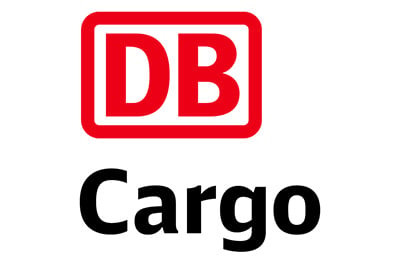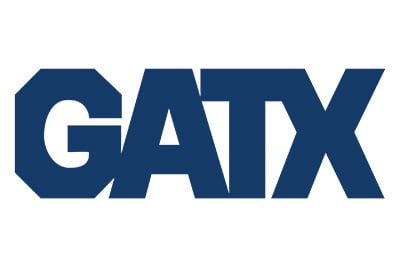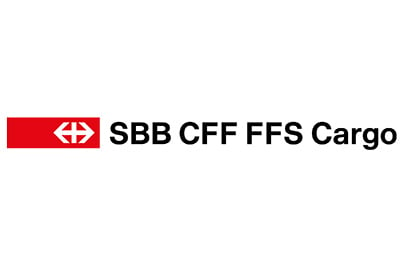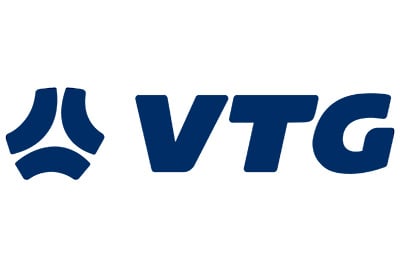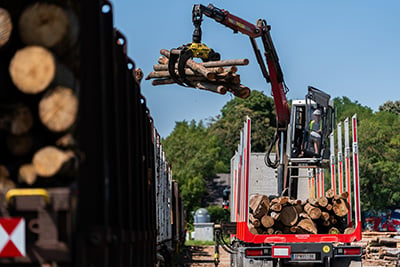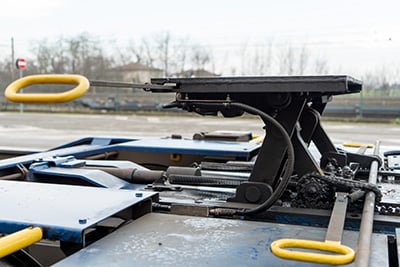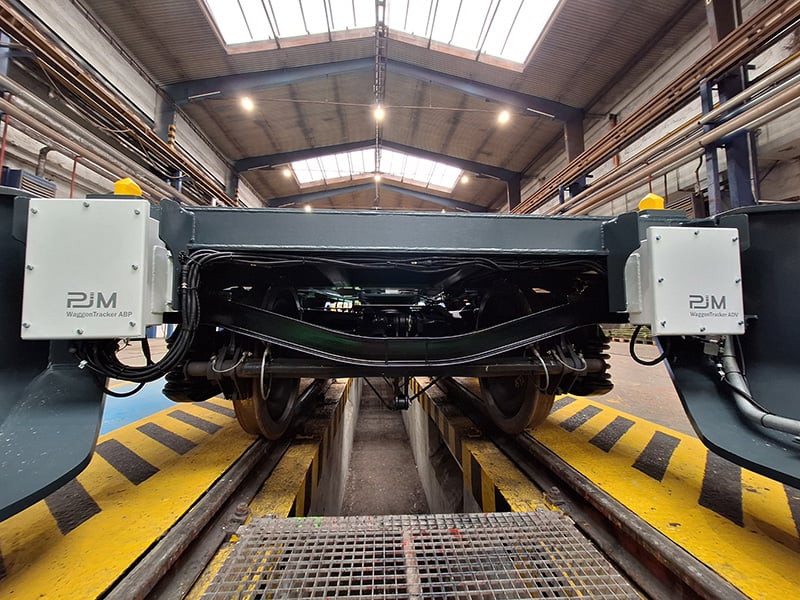PJM provides the world’s most comprehensive smart freight train solutions
Our digital goods train - or smart train - has arrived in the here and now and brings a bundle of benefits on track: efficiency, cost-effectiveness, availability, reliability and safety are increased and, in turn, costs, valuable time and effort in train preparation are reduced. Automated processes replace manual, tedious activities. All the functionalities that make up modern rail transport are already in operation at renowned railway companies. The biggest advantage of digital applications? Wagon keepers, railway undertakings and wagon lessors benefit from the many advantages from day one.
Smart freight train features at a glance
- Automated brake test
- Automated load weight monitoring
- Brake monitoring and brake system analysis in real-time
- Kingpin monitoring in real-time
- IDDS derailment diagnoses
- Monitoring of running characteristics
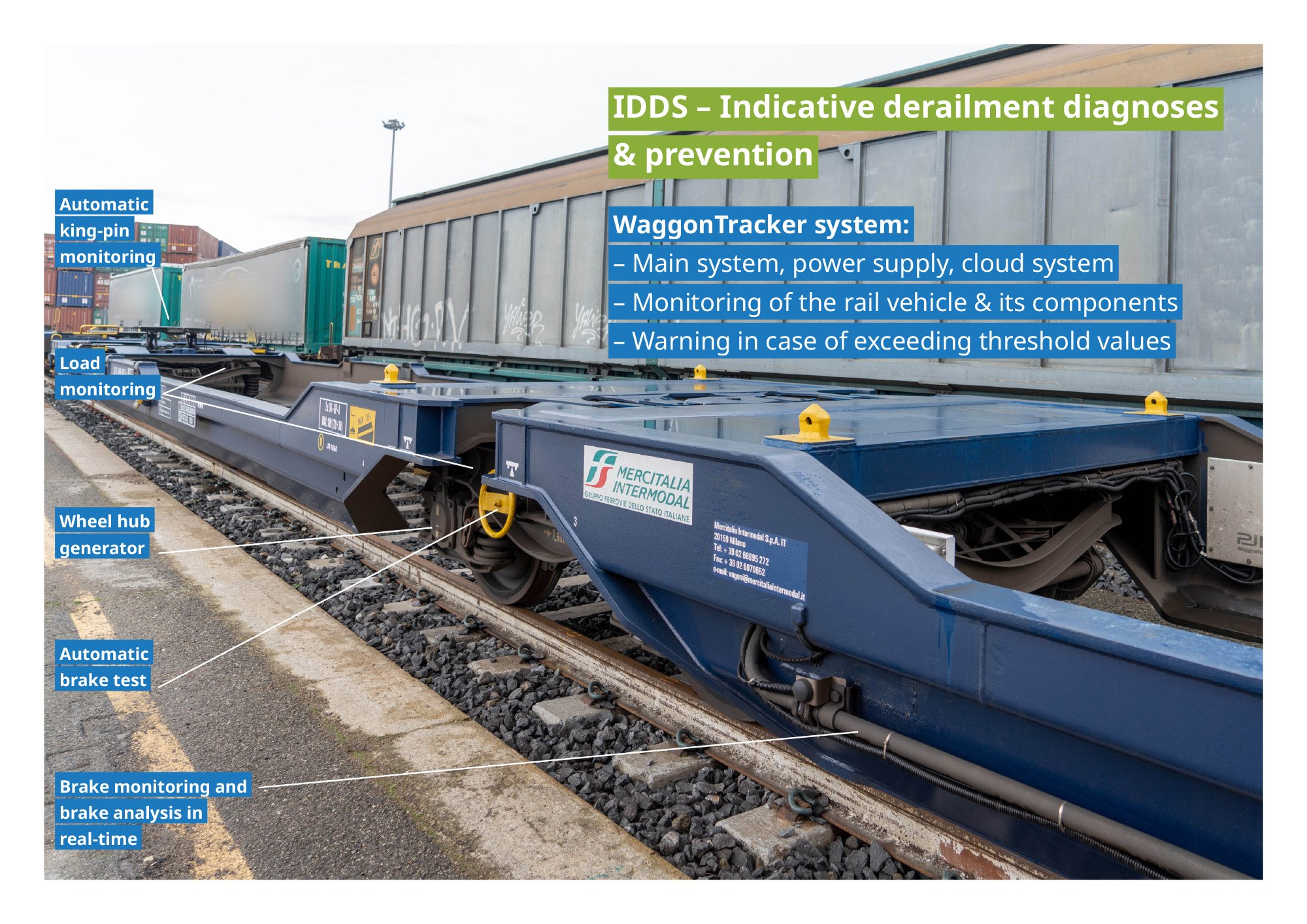
The basis of our digital overall system and its main features
- Autonomous and powerful power supply: Currently, the wheel hub generator is the preferred solution for autonomously supplying the car with sufficient power for demanding functions. In future, the power requirement can also be covered by a digital automatic coupling.
- Monitoring function: Relevant data about the freight wagon is recorded, processed and transmitted to a web service in real time. The data is divided into two categories:
- Basic data: Mileage, direction of travel, current position, last message, last movement, historical data.
- Sensor data: Loading status, running behaviour, axle bearing temperature, brake system status, brake energy status, derailment status, load weight, shock monitoring, trestle status, ambient temperature and many more
- Safety electronics and in-train communication: The safe recording of measurement data in combination with a connection to a central control unit form the basis for the automation of operating processes.
- The in-train communication is based on a long-range radio system that is designed for maximum availability and guarantees an encrypted, secure connection as well as direct communication with the train driver.
- Scalability: The overall digital system is scalable with customised and future applications. The modality of the system makes it possible to integrate any number of sensors, e.g. for axle bearing temperature monitoring.
- DAC-compatible: The WaggonTracker system is compatible with a future digital automatic coupling.
- Fully compatible: The PJM system is also compatible with other customized applications and independent of other technologies or wagon equipment.
- Compatible for all wagon types: The WaggonTracker is suitable for all wagon types and can be fitted out ex works on new wagons or integrated into existing wagon fleets. The system is easy to install, robust and largely maintenance-free. Thanks to its durability and immediate effects, upgrading existing wagons also makes economic sense.
- Simple integration: The WaggonTracker system is easy to integrate into the wagon fleet and upgrading the wagons is simple. The implementation of the upgrade is also flexible: either PJM installs the WaggonTracker system or the wagons are rented fully equipped: The applications are in the equipment portfolio of our partners VTG, TRANSWAGGON or GATX. The largest European wagon manufacturer Tatravagónka supplies wagons with automatic brake testing and all other digital train functions ex works.
- Approved & available technology: The WaggonTracker system is an approved technology, already in use at renowned railway companies and now available.

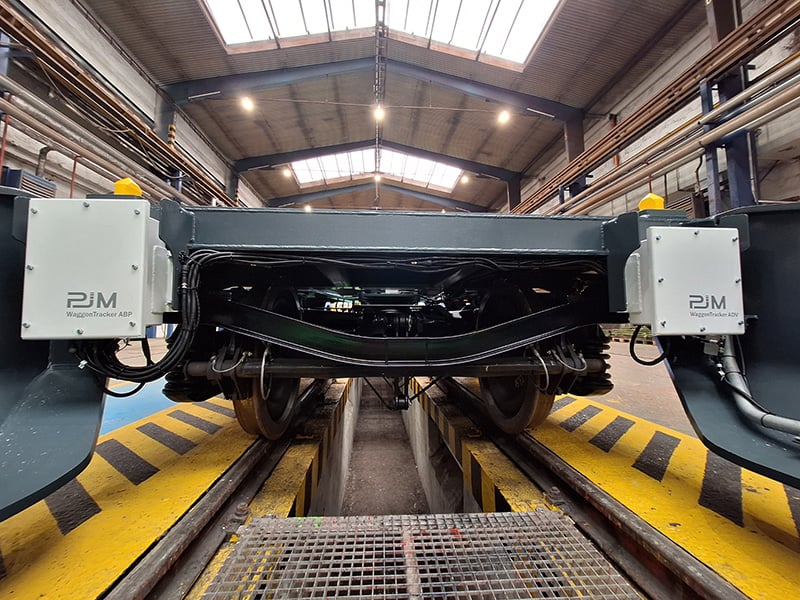
Download:
Leaflet Digital Rail Freight Solution
Further information:
Please contact Mr. Felix Egger-Cimenti
[email protected]
Automated brake testing system
Brake tests in freight transport are time-consuming, ardous and labour-intensive: in contrast to passenger trains, the brakes have to be checked manually. An employee checks each individual axle to ensure that the brake blocks are applied. The check is necessary every time wagons are detached or the train has been stationary for 24 hours. For a 500 metre long goods train, a brake check takes around 2 employees around 45 minutes. The PJM system uses measuring sensors to automate this process. A clear evaluation of the brake measurements is displayed on the tablet of the train driver or the person responsible for the brake test.
- The automatic brake test fulfils all safety-relevant requirements in terms of operation and vehicle.
- The brake testing system is the only approved system worldwide and is therefore the European reference system.
- Positive assessment assessed by TÜV Süd: February 2022
- Type approval from the BAV (Swiss Federal Office of Transport): November 11/2023
- The system has been tested over many years and has been in operational use at SBB Cargo since August 2027. Over 200 wagons are now equipped with the system, and a fleet roll-out will follow soon.
- The Automatic Brake Test (ABT) is fully compatible with a future DAC solution. Among other things, a DAC pilot train was equipped with Powerline PLUS communication technology and the automated brake testing system. The pilot train was in operation in Europe from February to December 2023 and travelled over 4,200 km. The ABP performed ‘flawlessly’ in all tests. A summary of the tests can be found at: https://rail-research.europa.eu/latest-news/successful-testing-of-the-dac-with-powerline-train-backbone/
Benefits
- G/P switching
- Train length
- Brake calculation
- Wagon wagon order
The brake testing system is the basis for further functions
- Monitoring of brake components (maintenance)
- Brake monitoring during the journey (faulty braking, train stalling, flat spots, etc.)
Advantages of automatic brake testing via tablet
- Faster train preparation – 2 minutes instead of 2 x 40 minutes
- Complete brake testing possible by 1 person
- More safety in the track environment
- More safety for the wagons
- Reliable detection of the brake status incl. handbrake
- Early detection of brake defects
- Higher quality in data evaluation
- Higher quality through reliable and reproducible processes
- Standardized, objective data for maintenance
- More expertise for asset management
- DAC-compatible
- Lower costs
- Faster turnaround times by increasing terminal capacities
- Realization of 1-person operation
- Documentation
- More efficiency
- Attractive & safe work
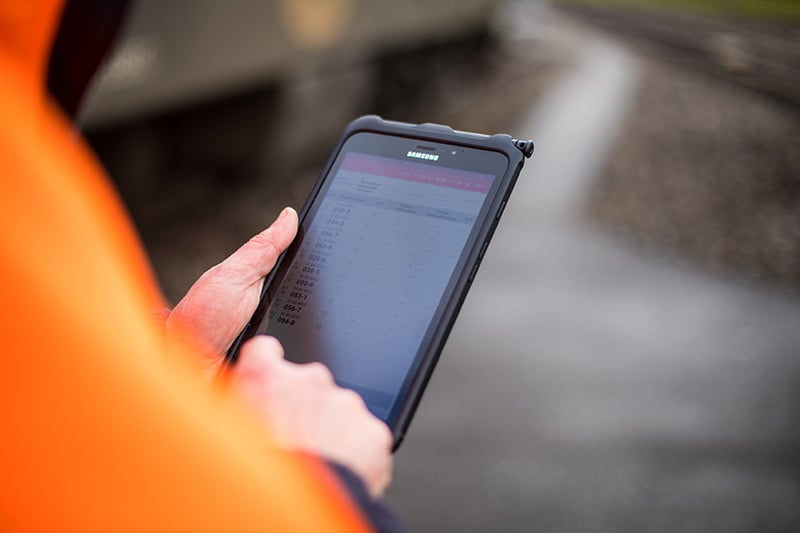
Real-time load weight monitoring
Faster and safer loading thanks to automatic load weight monitoring. The LoadMonitor system enables the loading process to be monitored directly on site and loading to be carried out quickly and correctly. During the loading process, signal lamps on the wagon indicate in real time when the maximum loading weight has been reached or the load is asymmetrically distributed. This ensures that the wagon is optimally and correctly loaded and that the maximum loading capacity is utilized as effectively as possible. The loading process is completed more quickly and the person responsible for loading can be sure that overloading has been ruled out. The system not only increases efficiency, but also the safety of goods transport.
Benefits
- Lower costs thanks to the best possible utilization of loading capacity
- Avoidance of overloading, as the maximum weight is no longer exceeded
- Time saving: faster loading & no more lengthy queuing at infrastructure checkpoints as the loading limit is adhered to
- Lower maintenance costs & higher mileage due to less stress on the wheelsets and bogie frame
- Optimized maintenance based on actual mileage and usage
- Control of weighing data provided by the customer
- Efficient process as time-consuming manual weighing is no longer necessary
- Less wheelset damage thanks to optimized brake adjustment in the train set
- Increased safety as individual components are no longer overloaded
- Real-time information on loading progress and shunting times for end customers and freight forwarders
- Digital train lists including the actual individual and total weights
- Higher availability
The most important facts about load weight monitoring:
- Recording of the total weight and optional bogie/wheel set/wheel disc load
- On-site display on the vehicle possible using signal lamps
- Geofence/route class-based parameterization of the maximum weight
- Real-time transmission in the web portal
- Precise and wear-free strain gauge technology (strain gauges)
- Calibration and limit value change over the air (OTA)
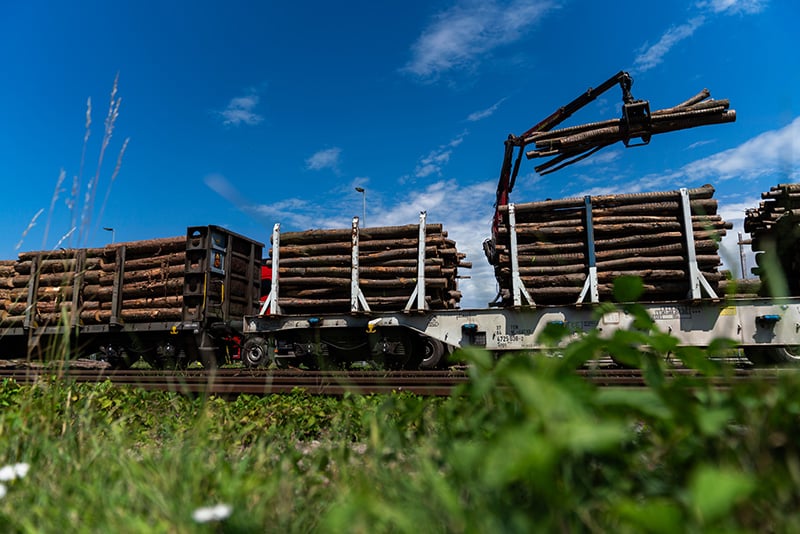
Download:
Leaflet on Load Monitoring system
Further information:
Please contact Mr. Felix Egger-Cimenti
[email protected]
Real-time kingpin monitoring
In intermodal transport, the kingpin component is essential in terms of safety, speed of loading and costs. In order to better fulfil the high logistics requirements in the intermodal sector and at the same time achieve greater safety in the trailer loading process, real-time monitoring of the kingpin offers enormous advantages.
Benefits
- Increased safety
– Reliable additional detection of the kingpin status (regardless of weather and visibility conditions)
– Warning in the event of unsafe transport status
Email to terminal for shunting journeys
Email to railway undertakings for trackside journeys
Optional: information to the train driver via in-train communication
- Lower costs
– Recognizing and preventing misuse of the support frame (unloading without opening the lock)
– Proof of the damage caused (location and time)
Responsibility for damage and assumption of costs by the party responsible
Follow-up training to prevent future damage
- Higher quality
– Improvement along the transport chain by ensuring along the transport chain by ensuring the correct function of the support frame both at a standstill and during travel
– Early detection of mechanical support frame defects
Locomotive no longer engages
Locomotive does not remain reliably locked during travel
Optimized maintenance and servicing measures on the trestle
References
